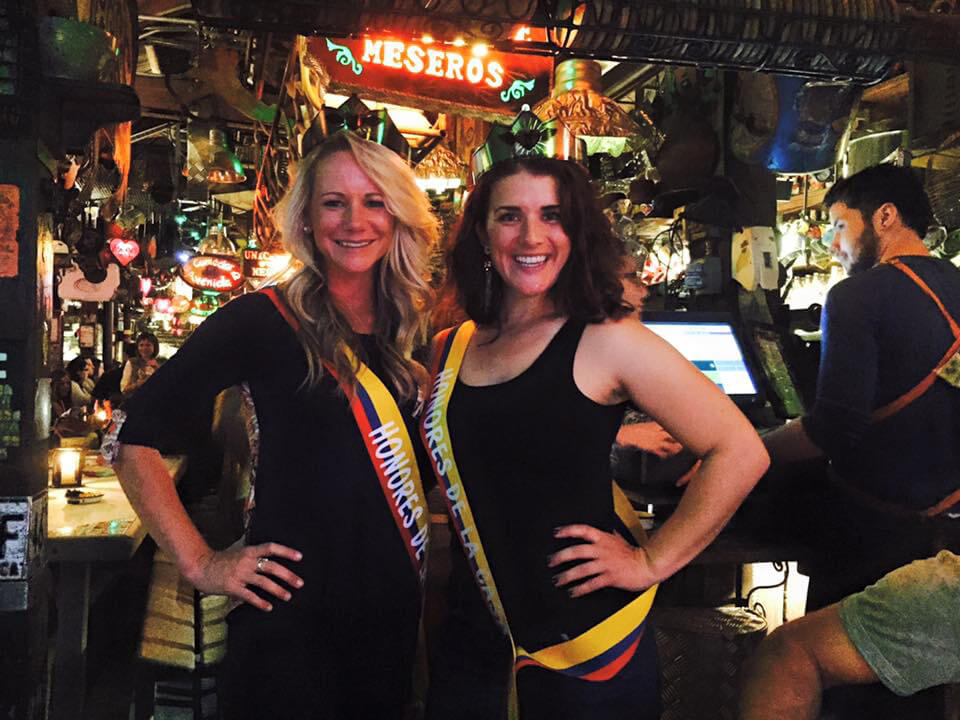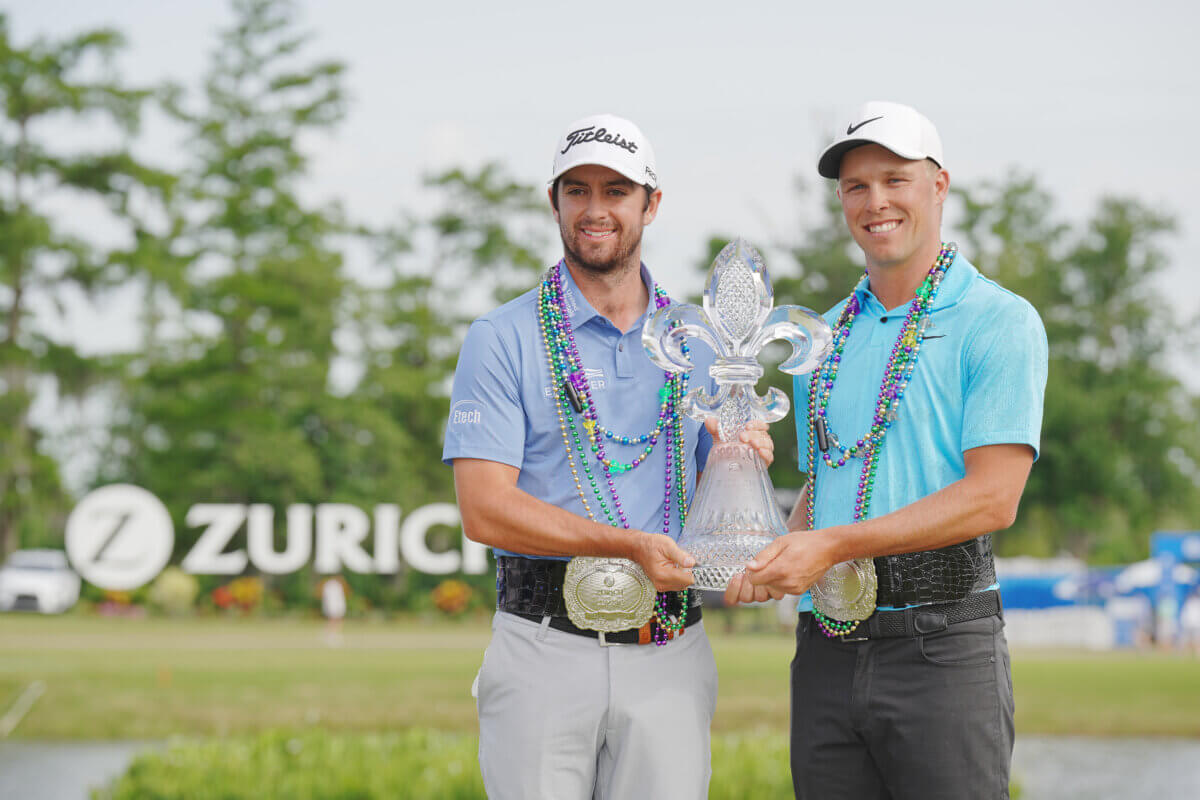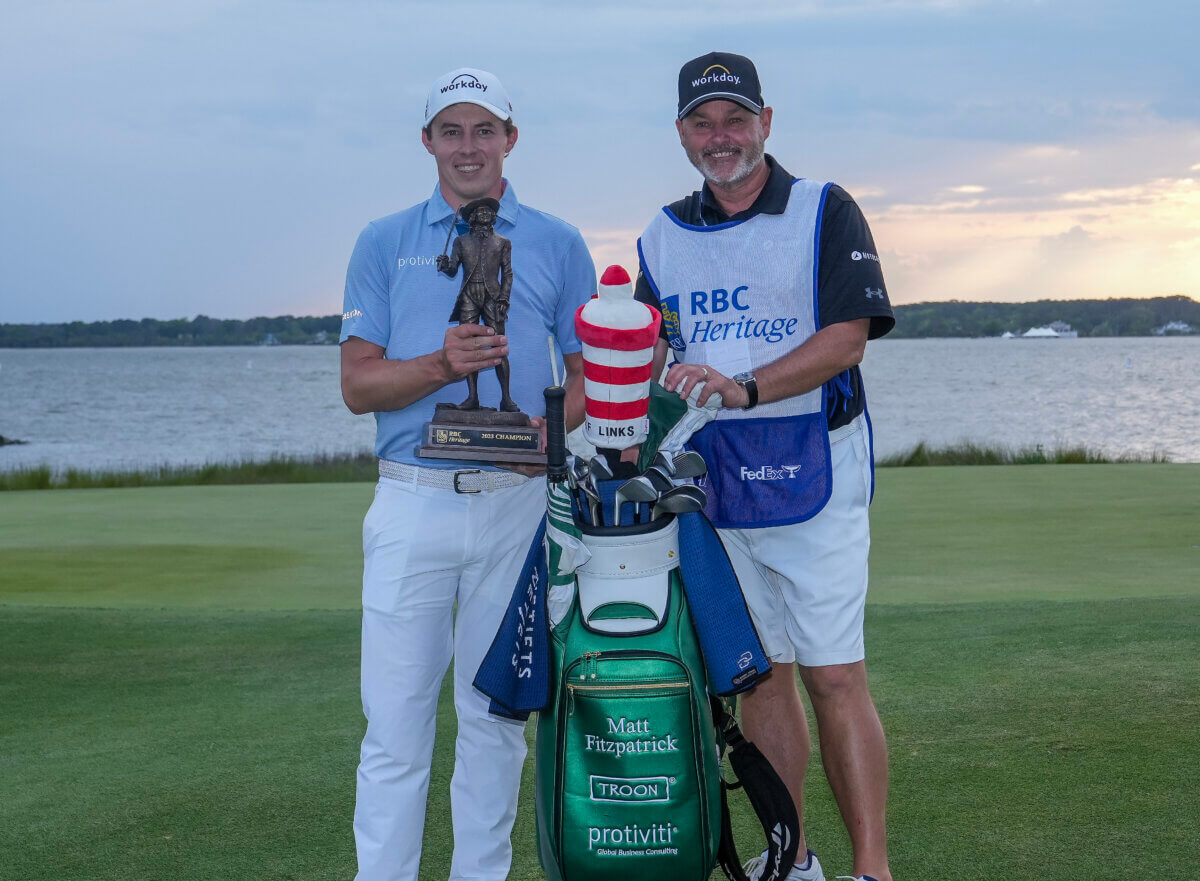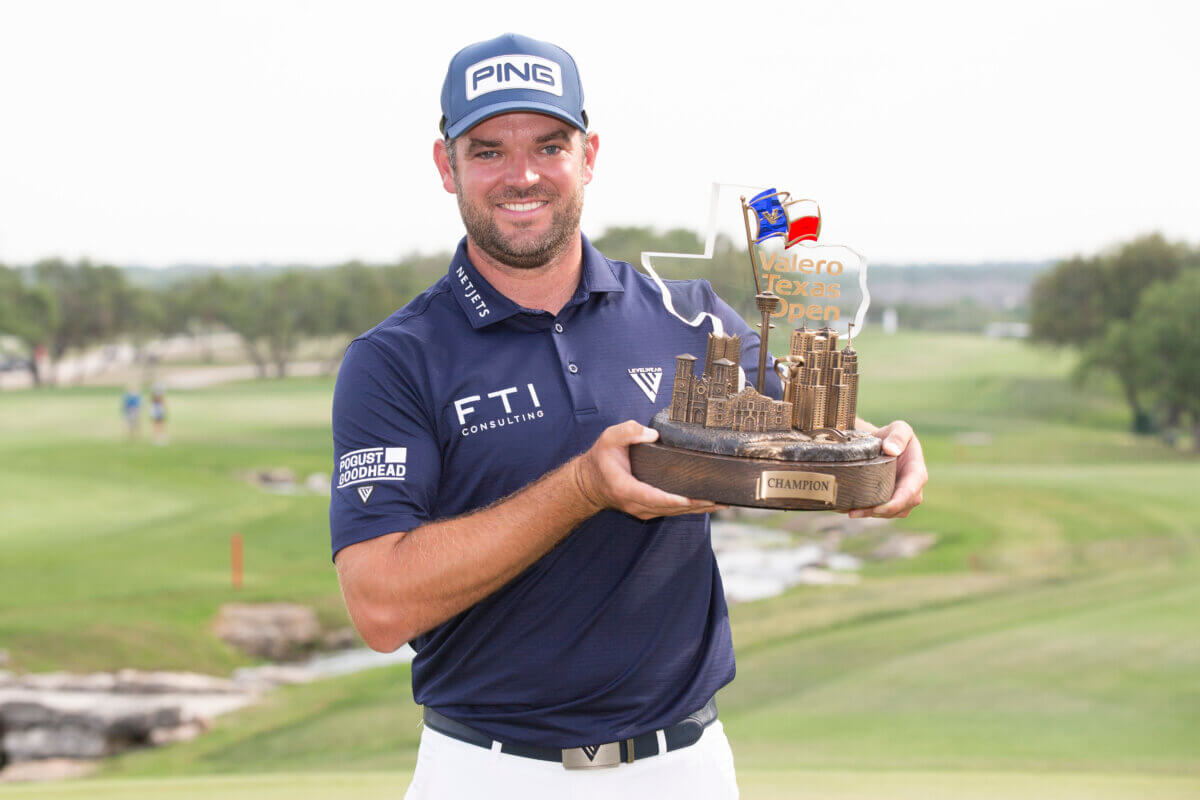Former LPGA player picks up a loop, gains even more appreciation for caddies

As a player, I have never been used to people telling me what to do. During my time on tour, I never hesitated to let my caddie know that I had needs that were extremely important, such as having jokes on hand when I played poorly, always making sure I had snacks and not allowing me to talk about relationship problems on the course.
So when my friend, Sydney Cox, asked me to caddie for her in Bogota, Colombia, for first stage of the Ladies European Tour qualifying school in 2015, I shuddered to think that I would have a boss on the golf course.
But when she said she’d foot the entire bill for my trip, I quickly said, “Yes.”
The last time I traveled internationally, I drove from Florida to Canada for the Manulife LPGA event. So, with my passport in hand, I was ready to go.
Sydney and I have known each other for close to 10 years from playing junior golf in Oklahoma together. She took a sabbatical for a year after playing professionally for three years after college, and I chose to turn pro right after I graduated.
RELATED: ‘This is how I became a PGA Tour caddie’ | Unwritten rules of caddying
When I made the decision to stop playing, Sydney picked up the sticks again. She had a reignited passion for the game and I was finding my way to just enjoying the game as a weekend golfer.
The opportunity to get back on the course in a competitive setting, but on the other side of the bag, excited me. I was also eager to help my friend pursue her dream of playing again and felt honored that she even wanted me there with her.
Our personalities could not be more different. She’s a small-town girl who is very proper and speaks with intention. I am boisterous, thrive in big cities and say whatever comes to my mind at the moment. This would be something that I would have to temper on the golf course.
I had one job, according to Sydney: to keep her laughing. She admittedly gets nervous and humor helps ease the tension. That felt like a task I could handle.
It was imperative that I did a job because I knew how important it was for her to advance to second stage. During the practice rounds, I got all the numbers for the course, made notes and mapped out the breaks of putts, took notes of how far she hit each club so I could help her decide which club to hit and I paid attention to which shots gave her trouble.
While I was there to do a job, there was the adventurous side of me that wanted to explore Bogota.

When we arrived in a city with so much fun at our fingertips, Sydney saw the “look” in my eye. She said, “It’s going to be like herding cats with you.”
When I played professionally, sightseeing was hardly ever an option because I always needed to feel rested and never had time. As a caddie though, my responsibilities seemed less taxing and having an extra glass of wine or beer at dinner didn’t seem like a problem.
The night before her first day of tournament play, I took it upon myself to explore the city. I met locals, drank Colombian beer and found myself in a wine bar with live music that made me want to rumba. But as a non-native and as someone who doesn’t speak a lick of Spanish beyond “mas cerveza,” when it came time to get home, issues started to arise.
Special papers were needed to get through the tolls where I was staying. Most taxis couldn’t get past the tolls, and since I was almost an hour away, I felt stranded.
“Oh no,” I thought to myself, “I’m going to be stuck here all night with handsome Colombian men and will miss Sydney’s tee time!”
I pulled out my phone and used the Google Translate app to my full advantage. Almost 20 minutes later, I found a taxi that was able to take me to my destination.
If you’ve never been to Bogota, here’s how the city is set up: It’s built into a mountain. The roads are windy and bumpy and there isn’t a moment when you’re not wondering if you’re going to die. The traffic is excessive during all hours of the day, motorcycles weave in and out and around cars, and stop signs seem to be a mere suggestion.
After gripping on to the side of the door, I paid the taxi driver 90mil pesos, which is equivalent to about $30 American dollars. I ran inside, set three alarms, changed into my pajamas and huddled under the covers. In a mere five hours, I needed to be up and ready to go.
When the first alarm went off, I jumped from my bed afraid that I had missed Sydney’s tee time. I groggily looked at the clock and felt relief that I had time, not only to shower, but to show up to the course in a timely manner. Thank goodness Colombian coffee is strong.
Sydney and I sat down for breakfast and she inquired about my activities the night before.
Between the altitude, lack of sleep, the boulder I was carrying on my back, and having to make sure I didn’t make any mistakes that would cost her shots, I had a sense of what my caddies went through when I played.
“I had fun,” I said sheepishly.
She looked at me and said, “I’m just glad you showed up today.”
Her comment was half joking and half, “I’m really happy you didn’t run off with a Colombian to marry him last night.”
Our tee time arrived and I was ready to caddie. I felt confident in her abilities and even more so, I wanted to see if I could do a good job and actually help her. Sydney seemed less interested in me giving her information on the course at first though. While walking to the second hole, she asked, “So, did you get into any trouble at all last night?”
“No… yes,” I quickly responded.
I waited to get scolded and for her to say, “How could you not take this more seriously?”

Instead, she laughed and said, “I really am just happy you’re alive.”
I stumbled around the course gathering yardages, cleaning her clubs, reading putts and attempting to make lame jokes.
Between the altitude, lack of sleep, the boulder I was carrying on my back, and having to make sure I didn’t make any mistakes that would cost her shots, I had a sense of what my caddies went through when I played.
There is so much more that goes into caddying that an outsider doesn’t see.
As a caddie, you need to have answers to questions that you may not have studied for. At one point during the third round of play, I was dazing off into the distance dreaming of Colombian men wooing me when Sydney tapped my shoulder and said, “Anya, where’s the flag?”
I came to and said, “Oh uh, somewhere on the green!”
MORE: From Tour player to revered caddie – the story of ‘Last Call Lance’
Besides course information, a caddie needs to make sure their player is staying level-headed. Caddies need to be equipped for when something goes wrong, and they need to be willing to admit if they made a mistake and to take the pressure off their player.
While Sydney was waiting to putt for a bogey on a par 5, I turned to her and whispered, “How many pairs of golf shoes did you bring to the tournament?”
She gazed up at me and said, “I know what you’re trying to do, Anya.”
“What?! I’m genuinely curious about your shoe collection in Colombia!”
“No, you’re not. I know you’re trying to get my mind off how crappy I played this hole.”
“Yes, you’re right. But really, how many shoes did you bring?”
Caddies are psychologists, friends, comedians, and at times have to show a little tough love. When Sydney dropped her club dramatically after hitting a poor shot, I picked it up and said, “Sydney, we are classy broads from Oklahoma. We don’t act like that.”
As those words came out of my mouth, I was reminded of my caddie, Dan Huber, on the LPGA, who constantly reminded me that I needed to act like a professional, even if I didn’t feel as though I was playing like one.
The physical part that went into walking the course and carrying the bag was less tiring than making sure I was mentally equipped to be a good support system. When the group we were playing with on the third day got warned for pace of play, I told Sydney, “If you make more one-putts we won’t get put on the clock as much.”
Even after the round is over, a good caddie never stops caddying for their player.
Uh, yeah, “Thanks for the great insight Einstein!” was the look I received and deserved.
When Sydney followed my suggestions and she hit a good shot, I would quip, “Good job caddie… I mean player.”
The final day came, and Sydney sat right on the cut-line to make it to finals. I knew she was nervous, as was I. I kept quoting her the line from Stuart Scott’s book Every Day I Fight, “Nerves are nothing but energy.”
I’ve been in her position before. I know the feeling of a missed putt that should have gone in and the frustration that comes with hitting a shot not a hundred percent committed. The last day though, we got into a groove and made the turn at 2 under. She parred 10 and 11, and made a great up and down for a bogey on 12.
I felt like nothing could derail us from our goal.
As in life though, you can’t control what happens, only how you react to it.
Sydney made another bogey on 13, a par 5, after hitting a poor pitch shot into the green.
“Look at me Sydney,” I said as we walked to the next hole, “We have five holes left. You’re fine. Don’t make this bigger than it is. We got this.”
She then parred 14 and followed up on 15 with a bogey.
“Okay Sydney, three holes left. We’re fine. You’re a good player. Trust yourself and commit.”
I could tell the nerves were getting to her. But as a caddie, there seems to be only so much you can do. I could say all the right things and try to give her as much encouragement and confidence as possible, but words sometimes mean nothing. Unfortunately, I felt all the nerves too, and in my mind, I hoped she couldn’t sense it.
She then bogeyed 16, 17 and 18.
When we hugged after her last putt went in, the tears in her eyes broke my heart.
It’s like we both knew she barely missed qualifying for second stage.
Minutes later, it was confirmed she missed by just one shot.
My role felt a little different than perhaps a caddie she would have paid a salary to. As her friend, it hurt me to think I didn’t help her more. I replayed shots from that day of what could have been. Hindsight always provides a good clue to how we could have done things differently on the course. But at the moment, she needed a friend.
I felt a tinge of sadness that I wouldn’t get to caddie for her in the final stage in Morocco. I also wanted to comfort her and let her know that I admired how hard she fought through the nerves despite the outcome.
As we sat in the restaurant over a couple glasses of wine with tears streaming down her face, I said, “You know what’s more annoying than you three-putting a hole? How freaking beautiful you look when you cry. It’s not fair to the rest of us humans.”
Thankfully, that got a little laugh and smile.
Then I realized something.
Even after the round is over, a good caddie never stops caddying for their player.






